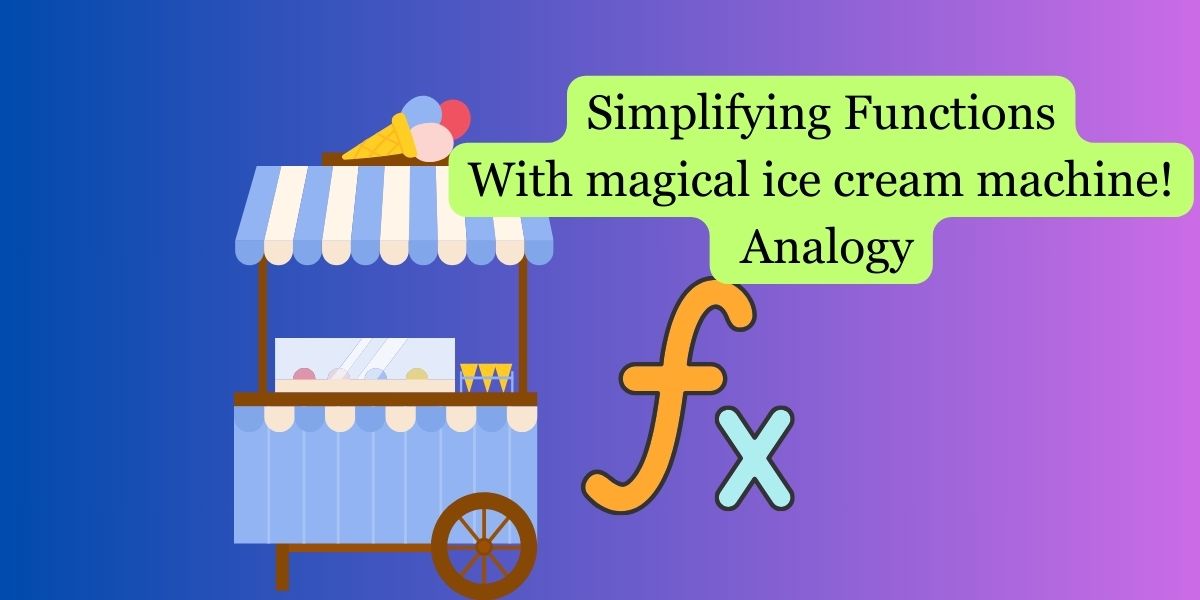Imagine you have a magical ice cream machine that takes in different flavors and creates unique ice cream cones. Each flavor is like a special ingredient, and the machine follows a set of rules to create the final ice cream.
- Ice Cream Machine (Function):
- Think of the ice cream machine as a magical function. It takes in different flavors as input and produces a delicious ice cream cone as output.
- Flavor Inputs (Domain):
- The flavors you can use are your input choices, or the “domain” of the ice cream machine. You can pick chocolate, vanilla, strawberry, or any flavor you like.
- Rules for Mixing (Function Rules):
- Now, the magic happens! Each flavor has a unique set of rules for how it contributes to the final ice cream. For example, chocolate might make it rich, and strawberry might make it fruity.
- Ice Cream Cone Output (Range):
- The resulting ice cream cone is the output, or the “range,” of the ice cream machine. It’s what you get after combining and following the rules for the chosen flavors.
- Repeating the Process (Function Repeated):
- You can use the machine again and again with different flavors, creating different ice cream cones each time. Each combination of flavors follows the same set of rules.
In mathematical terms, if the flavors are represented by the variable “x,” and the rules for creating the ice cream cone are represented by the function “f(x),” then the process is similar to understanding functions in math.
So, a function is like a magical ice cream machine that takes different flavors (inputs) and produces unique ice cream cones (outputs) based on a set of rules. It’s a tasty way to understand how functions work in mathematics!


No responses yet